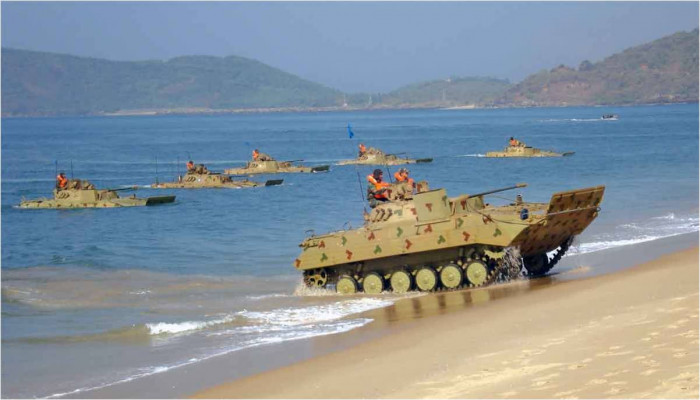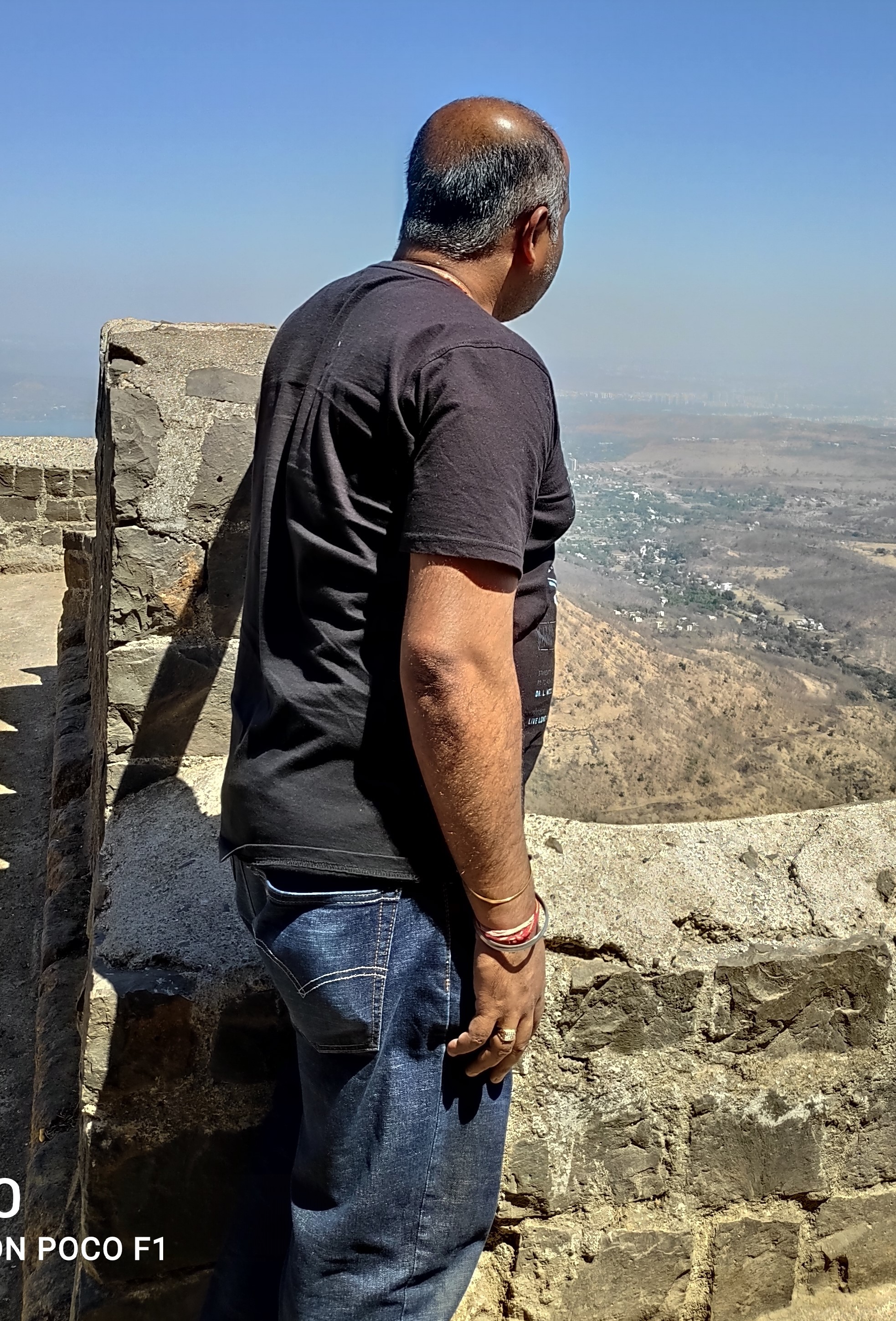Calling the Cavalry: Indian Army and its Mechanized Buildup
- In Military & Strategic Affairs
- 09:54 PM, Jul 15, 2022
- Soumik Pyne
Tanks originally came into existence during WW1 to support the infantry in assaulting the trenches by providing protection and firepower. Though tanks are lethal and well armored, as reaffirmed by recent events in Syria, Armenia, Iraq and Ukraine, tanks themselves are quite vulnerable on the battlefield while operating independently without protection from airpower and Enemy Infantry. These threats range from anti-tank missiles launched from aircraft to a single infantryman carrying a handheld anti-tank weapon.
Tanks function best as part of combined arms formations with organic anti-aircraft protection and their own supportive infantry that can maneuver quickly to neutralize any enemy anti-tank threats. That said infantry needs to be protected while transiting into and out of any conflict. This again has had two solutions. Firstly, the Armored personnel carriers (APC) which basically drop infantry in and then stay in the rear until it is time to pack them up again. Secondly, the Infantry combat vehicle (ICV) functions much like light tanks and complements armor by maneuvering into areas where tanks may not be able to go due to their size and weight.
The Indian Army remains unique amongst large national armies with 3640 tanks and some 3468 ICVs. The armored strength deployed is far higher than the number of infantry combat vehicles (ICV). In comparison the Chinese Deploy some 11000 ICVs and APCs to their 5000 odd tanks, the US Army deploys some 15500 ICVs and APCs to their 2500 tanks, Russians have some 13000 APCs and Infantry Fighting Vehicles (IFVs) to 3000 tanks (active forces only) while the Turks deploy some 7500 APCs and IFVs to 2800 Tanks. In fact, the number of IFVs and APCs operated by India is consummate with a much smaller Army like the Australian Army which operates some 1600 IFVs and APCs despite having only 30,000 men.
Do note that in all cases quoted the number of MRAPs (Mine Resistant Ambush Protected) armored wheeled vehicles has not been taken into account, that would make the difference far starker. In this, the Indian Army seems to still be following the strategy presented by JFC Fuller & Basil Liddell Hart prior to WW2. These strategists propagated what came to be known as the “all-tank” school, propagating a central theme on the dominance of the tank in land warfare.
The infantry’s role was held to be subordinate, required only to consolidate gains made by the action of armor. The Germans in WW2 held the opposite view and employed a combined arms doctrine with a wide variety of fast-moving armored infantry carriers supporting and, in many cases, acting as the decisive factor in the Blitzkrieg campaign. The US Army and Soviets too adopted the German model and used it to great effect defeating the Wehrmacht at their own game in WW2.
Post WW2 the dearth of armored infantry was felt to their detriment by the Israelis during the Yom Kippur War where the Israeli Army lost around 400 tanks to a combined armor and infantry force employed by Egypt. India too felt the last of armored infantry during 1965 when many of our armored thrusts into Pakistan could not be consolidated due to the lack of organic mechanized infantry.
This lack of mechanization has led to a situation where Infantry takes longer to be moved between strategic locations and with much more difficulty. Though India has a vast number of soft-skinned vehicles these cannot transport infantry up to the frontline and hence the deployment time is longer allowing the enemy to calibrate responses. This actually leads to suboptimal use of infantry as a strike component in combined arms battles and hence reduces their impact as an offensive leading force. Mechanized infantry can easily achieve dual aims of moving rapidly supporting armored thrusts and using IFVs to open new axes of the advance of their own. This is especially useful in plains, deserts and amphibious operations. Armies the world over have increased the quantum of mechanized infantry for the aforesaid reasons and these factors support the requirement of boosting the quantum of mechanized infantry in the Indian Army.
The Indian Army actually first saw mechanized forces in action as their adversary in the 1965 war when Pakistani infantry used American-made M113 APCs while the Indian Army had no APCs then. A decision was then taken to induct APCs into the Indian Army. APCs were first provided to some of the infantry battalions tasked to operate with armor. Czechoslovakian-built Topas and SKOT APCs were acquired followed by BTR-60s from the USSR in 1968 and inducted into the Indian Army. These initial APC-borne infantry battalions saw battle on both Fronts during the 1971 Indo-Pak War. The process of mechanization continued after the 1971 war, and by 1977, 11 Infantry Battalions had been converted into APC-borne infantry battalions.
In 1977 the KV Krishna Rao committee submitted its report on reorganization and modernization of the Indian Army. One of the members of this committee was then Maj Gen Krishnaswamy Sundarji. General Sundarji would go on to become chief of staff of the Indian Army and lead it in Operation Bluestar and Sri Lanka as well. The last former British Indian army officer to lead the Indian Army, General Sundarji was an infantry officer with a deep interest in armoured operations. In fact, he is credited for the design of the all-black uniform the armoured corps wear to this day. The General had been studying the potential of the BMP-1 as derived by experiences of Syrian forces operating them in the Arab-Israeli Yom Kippur war of 1973.
The BMP-1 (Boyevaya Mashina Pekhoty) was created by the Soviet KMZ factory in 1966, as a combination of a light tank and an amphibious, missile-borne APC to fight alongside armored forces independently on battlefields which could even be in a Nuclear, Biological and Chemical (NBC) environment. It’s 73mm gun, and the mounted Anti-Tank Guided Missile Launcher (ATGM) launcher outgunned anything lighter than a Tank in service in the subcontinent at that time. General Sundarji then recommended that all the APC-borne infantry battalions be brought under a new combat arm called the mechanized infantry and be equipped with the BMP-1 in a revolutionary move. It must be noted here that to date Pakistan has not been able to equip its forces with a proper ICV relying instead on antiquated M113 upgrades to carry its infantry into battle.
Later when the BMP2 version became available General Sundarji led from the front yet again in convincing the then Rajiv Gandhi-led government to negotiate and work with the USSR in setting up a manufacturing plant for the BMP-2 in India. This plant is known today as Ordnance Factory Board (OFB) Medak was established in 1986. The first BMP-2 rolled out from here in 1987. More than 2500 BMP-2s have been produced at Medak in the last 44 years which now equip some 50 mechanized infantry battalions of the mechanized infantry regiment apart from serving in various other roles as well. The above said, because of the infrastructural deficiencies in our border regions. The inability of early wheeled IFVs to provide the protection and firepower desired by the Indian Army never really caught on and was not inducted in large numbers as compared to wheeled APC/IFVs leading to a situation where India has only 157 old OT-64 SKOT as it’s wheeled armor component today. However, recent positive developments indicate that the historical lack of mechanization of the Indian Army might soon be mitigated with the addition of thousands of new Made in India Wheeled Armored vehicles that should allow the Infantry space to maneuver far more quickly and act as a proper offensive arm on its own terms.
The process of acquiring new wheeled armor started with an order to Bharat forge for 27 Kalyani M4 armored vehicles in February 2021 for Rs 177.95 crores. The M4 essentially a JV product originally from the stables of South African armaments maker Paramount was acquired in an emergency following the lack of armored platforms to operate in high-altitude regions which were exposed during the Galwan imbroglio. It is notable that in the immediate aftermath of Galwan, India was exposed to news articles stating how the Chinese were able to bring wheeled armored platforms onto the shores of the Pangong Tso while India did not have any armor on the Pangong. The M4 acquisition was likely a product of those exposures and deliveries remain in progress.
This was followed up with an order to Mahindra systems for 1300 Advanced light specialist vehicles signed in March 2021. This signified the first large purchase of wheeled armored platforms other than MPVs since the acquisition of some BRDM 2 in the 1970s. The Mahindra ASLV (Armored Light Specialist Vehicle) can seat up to 8 people while protecting them from HMG fire hand grenades, mines and shrapnel with its STANAG 2 level body. While these will most likely go into use in counter-terrorism at the onset this vehicle can be expected to provide much better protection than the Mahindra RAKSHAK or MARKSMAN now in use simply because these vehicles are little more than unarmored jeeps. The ALSV is a purpose-built armored car. The Air force simultaneously acquired some Light bulletproof vehicles for the Garud Special forces from Ashok Leyland. The Ashok Leyland LBPV (Light Bullet Proof Vehicle) is based on the Lockheed Martin Common Vehicle Next Generation concept and is being used as part of base security and anti-terror operations with many units having been delivered now.
While no further major orders have been firmed up the Indian Army has put out a number of Request for Information (RFIs) to acquire some 1200 Protected mobility vehicles (PMV) and 800 Light armored multi-role vehicles (LAMV). Apart from these an older RFI for 198 8x8 wheeled armored vehicles for reconnaissance units has yet to be completed with orders not placed yet. There is also some news of a similar number of 8x8 armored vehicles with the NAMICA turret and a yet-to-be-detailed 105mm gun under development.
The induction of over 3600 wheeled armored vehicles as detailed above alongside a planned 1750 Futuristic Infantry Combat Vehicle (FICVs) should see the quantum of armored vehicles other than tanks operated by the Indian Army grow to 5500+ in the mid-2030s from the 3600 odd units in service today, this increase in numbers shall bring much more operational flexibility for the infantry which should simultaneously evolve into a much more mobile and nimble force that can use wheeled armor and hand-held heavy armaments such as the SAAB AT4 and Man Portal Anti-Tank Guided Missile (MPATGM) to deal devastating damage to any opposition. In fact, it would not be wrong to see the induction of wheeled armor as part of the modernization of infantry given mechanization is as much if not more important than the induction of modern body armor, sights, battlefield radar and man-portable weapons.
Induction of capable wheeled armored platforms can also help the Armored corps reorganize themselves into a mix of heavy and light armor formations increasing the number of combined arms units which can then be deployed across a wider swathe in any offensive action forcing the opposition to spread their defense thin increasing the chance of breakthroughs. Having more wheeled vehicles available in peacetime can also help reduce OPEX by having more regular deployments being handled by wheeled armor which has a lower maintenance cost, wheeled vehicles perform best in built-up areas and are therefore very useful in urban situations where they can use metalled roads to their advantage. Also, wheeled vehicles make much lower noise than tracked ones making them inherently stealthier and hence better suited to special anti-terrorist operations.
All in all, the induction of a wide variety of capable wheeled platforms should be a force multiplier for the Indian Army in the long run helping it transition into a much more nimble force with greater firepower.
Image source: The Official Home Page of the Indian Army
Disclaimer: The opinions expressed within this article are the personal opinions of the author. MyIndMakers is not responsible for the accuracy, completeness, suitability, or validity of any information on this article. All information is provided on an as-is basis. The information, facts or opinions appearing in the article do not reflect the views of MyindMakers and it does not assume any responsibility or liability for the same.







Comments